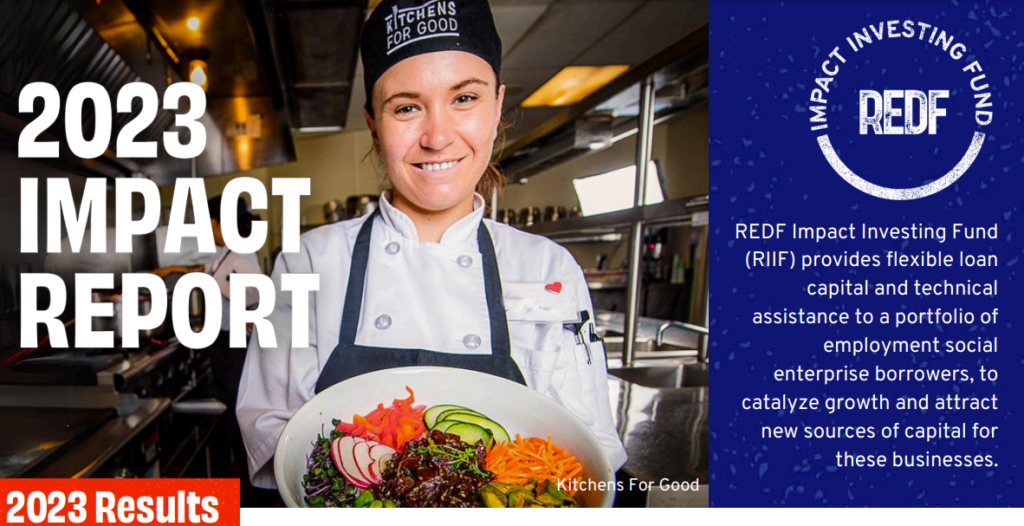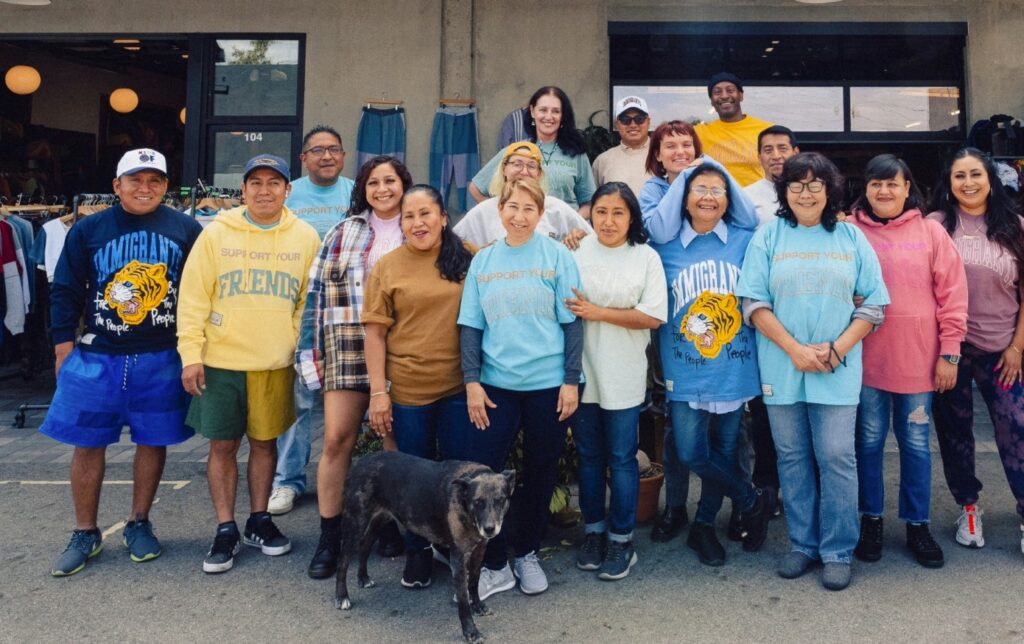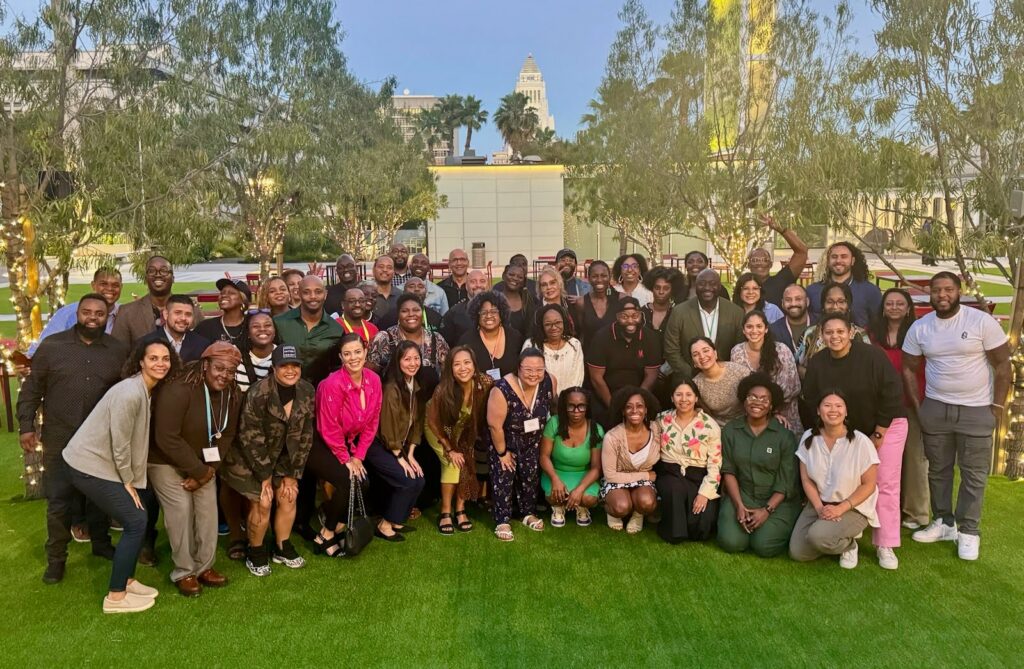In 2017 REDF launched its Impact Investing Fund (RIIF) to meet a growing need within the employment social enterprise community for flexible funding to accelerate growth in the field. Today RIIF is a certified Community Development Financial Institution (CDFI) – a lender dedicated to providing credit to mission-driven businesses and increasing financing available to communities that have historically been denied access. With a current portfolio of 16 mission-aligned businesses and $5 million in lending to date, we’ve seen social entrepreneurs that have weathered challenging shocks like a global pandemic and the resulting inflationary environment, continue to explore new mission-driven business models. As the portfolio matures and delivers both financial returns to investors – and employment and economic opportunity for employees of our portfolio enterprises – impact investors continue to view Program-Related Investments (PRIs), or below-market rate investments from foundations, as an effective instrument for social impact and preservation of philanthropic capital.
Early on our RIIF team focused on building the fund, and engaged in lively discussions about the various ways a social enterprise funds its operations. Emilie Linick, the Director of Impact Lending, brought a deep understanding of the key policy and risk architecture the fund would need. REDF colleagues and practitioner experts joined our credit committee to help sharpen RIIF’s investment thesis. And we hired a talented team of underwriters and portfolio managers to give the fund a national reach. With this strong foundation, we were able to employ some innovative approaches to provide growth capital and engage borrowers.
Blended Finance
During the Covid crisis we pivoted to provide more flexible finance options, including deploying technical assistance, loan modifications, and eligibility for REDF grants to RIIF borrowers, and offering Lines of Credit to social enterprises that are grantees of REDF. Since our team engaged with the enterprise as both grant-maker and lender, we needed clear and transparent communications when blending loan and grant tools while supporting an organization.
Advisory Council and New Risk-Rating System
In 2020, we formed the RIIF Advisory Council, comprised of some of the sector’s best experts and leaders to ensure RIIF reflects the diverse voices of the social enterprise movement and the communities we serve. With their input, we launched a new, alternative risk-rating system in 2021 and used it to underwrite and manage our portfolio in 2022. This risk rating values assets not typically included, like deeply rooted connections to the entrepreneur’s community, and it doesn’t penalize borrowers for gaps in employment histories. This approach supports RIIF’s goal of managing social enterprise risk and to encourage other lenders to do the same. We also co-created with borrowers de-risking elements, from building up cash reserves over time to executive coaching for portfolio leaders. These and other specific activities, that help mitigate the risk of the loan and benefit the enterprise, are now core to RIIF’s risk and risk mitigation process.
Challenging Misperceptions
While we gain more insights using our new risk-rating system, we’ll also monitor our portfolio’s performance against measures of small business credit risk in traditional capital markets. With 5 years of portfolio performance, 6 borrowers successfully repaying and exiting the portfolio, and non-performing loans at industry-average, RIIF intends to model to lenders that the businesses our borrowers are running, that have historically been perceived as too risky, are indeed a good investment. And with more capital flowing into the employment social enterprise sector, sustainability will only improve.
What’s Next
As we come into the CDFI community, we’re looking to expand the networks with which we partner to make RIIF funding more accessible to entrepreneurs in communities where there are often capital gaps. Our goal is to have more than 60% of the portfolio assets concentrated with leaders of color or entrepreneurs who share the lived experience of the people they employ. We want to be responsive to the needs of our borrowers in terms of flexible capital, capacity-building support, and access to a community of 225+ social entrepreneurs with a shared vision of an economy that works. For everyone.


